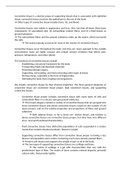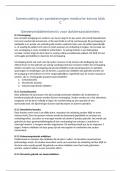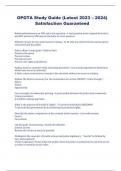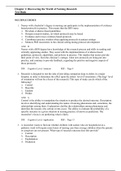Samenvatting
Summary Connective Tissue Histology
This document contains a summary of the lecture notes + book chapters of the subject connective tissue during the Cell Biology-Histology course in the first year of Biomedical Sciences at the VU. Other lecture notes and summaries are available on my profile. I finished the Histology exam with a 7.3.
[Meer zien]












